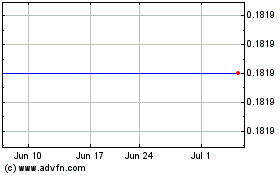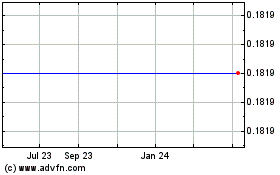PLANO, Texas -
(Feb. 24, 2017) - J. C. Penney Company,
Inc. (NYSE:JCP) today announced it is implementing a plan to
optimize its national retail operations as part of the Company's
successful return to profitability. Under the plan, the Company
expects to close two distribution facilities and approximately 130
- 140 stores over the next few months. These strategic decisions
will help align the Company's brick-and-mortar presence with its
omnichannel network, thereby redirecting capital resources to
invest in locations and initiatives that offer the greatest revenue
potential.
"In 2016, we achieved our $1
billion EBITDA target and delivered a net profit for the first time
since 2010; however, we believe we must take aggressive action to
better align our retail operations for sustainable growth. During
the year, it became evident the stores that could fully execute the
Company's growth initiatives of beauty, home refresh and special
sizes generated significantly higher sales, and a more vibrant
in-store shopping environment," said Marvin R. Ellison, chairman
and chief executive officer of JCPenney. "We believe the relevance
of our brick and mortar portfolio will be driven by the
implementation of these initiatives consistently to a larger
percent of our stores. Therefore, our decision to close stores will
allow us to raise the overall brand standard of the Company and
allocate capital more efficiently."
"We understand that closing stores
will impact the lives of many hard working associates, which is why
we have decided to initiate a voluntary early retirement program
for approximately 6,000 eligible associates. By coordinating the
timing of these two events, we can expect to see a net increase in
hiring as the number of full-time associates expected to take
advantage of the early retirement incentive will far exceed the
number of full-time positions affected by the store closures,"
added Ellison.
"We believe closing stores will
also allow us to adjust our business to effectively compete against
the growing threat of online retailers. Maintaining a large store
base gives us a competitive advantage in the evolving retail
landscape since our physical stores are a destination for
personalized beauty offerings, a broad array of special sizes,
affordable private brands and quality home goods and services. It
is essential to retain those locations that present the best
expression of the JCPenney brand and function as a seamless
extension of the omnichannel experience through online order
fulfillment, same-day pick up, exchanges and returns," said
Ellison.
"While many pure play e-commerce
companies are experiencing dramatically increasing fulfillment
costs, we are pleased with the double digit growth of jcpenney.com
and how leveraging our brick and mortar locations is enabling us to
offset the last-mile delivery cost. We believe the future winners
in retail will be the companies that can create a frictionless
interaction between stores and e-commerce, while leveraging
physical locations to minimize the growing operational costs of
delivery. In fact, in 2016 approximately 75% of all online orders
touched a physical store. Even with a reduced store count, JCPenney
is competitively positioned to deliver a differentiated department
store model that meets the expectations of a digital world with an
inspiring, tangible shopping environment," Ellison added.
As a result of the store actions,
JCPenney will close a distribution center located in Lakeland, Fla.
in early June, at which time operations will transfer to the
Company's logistics facility in Atlanta as part of a strategic
effort to streamline store support services. The Company also is in
the process of selling its supply chain facility in Buena Park,
Calif. in an effort to monetize a lucrative real estate asset.
Associates who will be impacted by
the store and distribution center closures will receive separation
benefits, which includes assistance identifying other employment
opportunities and outplacement services such as resume writing and
interview preparation.
Eligibility for the Voluntary
Early Retirement Program (VERP) will generally include home office,
stores and supply chain personnel who met certain criteria related
to age and years of service as of Jan. 31. Approximately 6,000
associates are eligible for the program. Current costs and future
savings will be based on the number of associates who accept on or
before March 17 when the consideration period expires. The
Company's qualified pension plan will remain in a well-funded
status post VERP. No cash contributions to the pension plan
are anticipated for the foreseeable future. Charges related
to the VERP, of which the vast majority will be non-cash, will be
reported in the Company's first quarter fiscal 2017 results.
FINANCIAL
IMPACT
The total store closures represent approximately 13 - 14 % of the
Company's current store portfolio, less than 5% of total annual
sales, less than 2% of EBITDA and 0% of net income. The stores
identified for closure either require significant capital to
achieve the Company's new brand standard or are minimally cash flow
positive today relative to the Company's overall consolidated
average. Comparable sales performance for the closing stores was
significantly below the remaining store base and these stores
operate at a much higher expense rate given the lack of
productivity. Once cycled, these closures are expected to be net
income neutral.
The annual cost savings resulting
from these strategic decisions, primarily occupancy, payroll, home
office support, corporate administration and other store-related
expenses, are estimated at approximately $200 million. During the
first half of 2017, the Company expects to record an estimated
pre-tax charge of approximately $225 million, primarily lease
termination obligation expenses, non-cash asset impairments and
transition costs, in connection with this initiative.
The Company plans to release a
full list of planned closures in mid-March pending notification of
all affected personnel. Nearly all impacted stores are expected to
close in the second quarter of 2017.
"I have a deep appreciation and
respect for our associates who are on the front lines working
tirelessly to serve our customers every day. Closing a store is
never an easy decision, especially given the local impact on valued
employees and our most loyal shoppers," said Ellison. "While any
actions that reduce or exclude our presence in communities across
the country is always difficult, it is essential that JCPenney
continues to evolve in order to achieve long-term growth and
profitability and deliver on shareholder value."
Media
Relations:
(972) 431-3400 or jcpnews@jcp.com; Follow us @jcpnews
Investor Relations:
(972) 431-5500 or jcpinvestorrelations@jcpenney.com
About
JCPenney:
J. C. Penney Company, Inc. (NYSE:JCP), one of the nation's largest
apparel and home furnishings retailers, is on a mission to ensure
every customer's shopping experience is worth her time, money and
effort. Whether shopping jcp.com or visiting one of over 1,000
store locations across the United States and Puerto Rico, she will
discover a broad assortment of products from a leading portfolio of
private, exclusive and national brands. Supporting this value
proposition is the warrior spirit of over 100,000 JCPenney
associates worldwide, who are focused on the Company's three
strategic priorities of strengthening private brands, becoming a
world-class omnichannel retailer and increasing revenue per
customer. For additional information, please visit jcp.com.
Forward-Looking
Statements:
This release may contain forward-looking statements within the
meaning of the Private Securities Litigation Reform Act of 1995.
Words such as "expect" and similar expressions identify
forward-looking statements, which include, but are not limited to,
statements regarding sales, gross margin, selling, general and
administrative expenses, earnings and cash flows. Forward-looking
statements are based only on the Company's current assumptions and
views of future events and financial performance. They are subject
to known and unknown risks and uncertainties, many of which are
outside of the Company's control that may cause the Company's
actual results to be materially different from planned or expected
results. Those risks and uncertainties include, but are not limited
to, general economic conditions, including inflation, recession,
unemployment levels, consumer confidence and spending patterns,
credit availability and debt levels, changes in store traffic
trends, the cost of goods, more stringent or costly payment terms
and/or the decision by a significant number of vendors not to sell
us merchandise on a timely basis or at all, trade restrictions, the
ability to monetize non-core assets on acceptable terms, the
ability to implement our strategic plan including our omnichannel
initiatives, customer acceptance of our strategies, our ability to
attract, motivate and retain key executives and other associates,
the impact of cost reduction initiatives, our ability to generate
or maintain liquidity, implementation of new systems and platforms,
changes in tariff, freight and shipping rates, changes in the cost
of fuel and other energy and transportation costs, disruptions and
congestion at ports through which we import goods, increases in
wage and benefit costs, competition and retail industry
consolidations, interest rate fluctuations, dollar and other
currency valuations, the impact of weather conditions, risks
associated with war, an act of terrorism or pandemic, the ability
of the federal government to fund and conduct its operations, a
systems failure and/or security breach that results in the theft,
transfer or unauthorized disclosure of customer, employee or
Company information, legal and regulatory proceedings and the
Company's ability to access the debt or equity markets on favorable
terms or at all. There can be no assurances that the Company will
achieve expected results, and actual results may be materially less
than expectations. Please refer to the Company's most recent Form
10-Q for a further discussion of risks and uncertainties. Investors
should take such risks into account and should not rely on
forward-looking statements when making investment decisions. Any
forward-looking statement made by us in this press release is based
only on information currently available to us and speaks only as of
the date on which it is made. We do not undertake to update these
forward-looking statements as of any future date.
###
This
announcement is distributed by Nasdaq Corporate Solutions on behalf
of Nasdaq Corporate Solutions clients.
The issuer of this announcement warrants that they are solely
responsible for the content, accuracy and originality of the
information contained therein.
Source: J. C. Penney Company, Inc. via Globenewswire
J C Penney (NYSE:JCP)
Historical Stock Chart
From Mar 2024 to Apr 2024

J C Penney (NYSE:JCP)
Historical Stock Chart
From Apr 2023 to Apr 2024
